Expanding the molecular language of protein liquid-liquid phase separation
- PMID: 38553587
- PMCID: PMC11230844
- DOI: 10.1038/s41557-024-01489-x
Expanding the molecular language of protein liquid-liquid phase separation
Abstract
Understanding the relationship between a polypeptide sequence and its phase separation has important implications for analysing cellular function, treating disease and designing novel biomaterials. Several sequence features have been identified as drivers for protein liquid-liquid phase separation (LLPS), schematized as a 'molecular grammar' for LLPS. Here we further probe how sequence modulates phase separation and the material properties of the resulting condensates, targeting sequence features previously overlooked in the literature. We generate sequence variants of a repeat polypeptide with either no charged residues, high net charge, no glycine residues or devoid of aromatic or arginine residues. All but one of 12 variants exhibited LLPS, albeit to different extents, despite substantial differences in composition. Furthermore, we find that all the condensates formed behaved like viscous fluids, despite large differences in their viscosities. Our results support the model of multiple interactions between diverse residue pairs-not just a handful of residues-working in tandem to drive the phase separation and dynamics of condensates.
© 2024. The Author(s), under exclusive licence to Springer Nature Limited.
Conflict of interest statement
Competing Interests
The authors declare no competing interests.
Figures




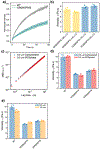
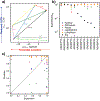
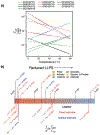
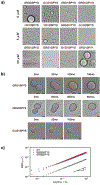
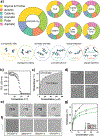
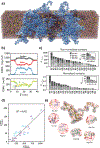
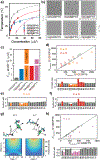
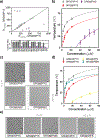
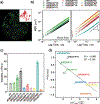
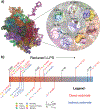
Similar articles
-
Regulation of Peptide Liquid-Liquid Phase Separation by Aromatic Amino Acid Composition.Small. 2024 Sep;20(38):e2401665. doi: 10.1002/smll.202401665. Epub 2024 May 28. Small. 2024. PMID: 38804888
-
Factors Affecting Liquid-Liquid Phase Separation of RGG Peptides with DNA G-Quadruplex.ChemMedChem. 2025 Jan 14;20(2):e202400460. doi: 10.1002/cmdc.202400460. Epub 2024 Nov 4. ChemMedChem. 2025. PMID: 39256186
-
Molecular dynamics simulation on regulation of liquid-liquid phase separation of repetitive peptides.Sci Rep. 2024 Jun 11;14(1):13382. doi: 10.1038/s41598-024-64327-7. Sci Rep. 2024. PMID: 38862770 Free PMC article.
-
Peptide-mediated liquid-liquid phase separation and biomolecular condensates.Soft Matter. 2025 Mar 5;21(10):1781-1812. doi: 10.1039/d4sm01477d. Soft Matter. 2025. PMID: 39964249 Review.
-
Functional Biomaterials Derived from Protein Liquid-Liquid Phase Separation and Liquid-to-Solid Transition.Adv Mater. 2025 Jun;37(22):e2414703. doi: 10.1002/adma.202414703. Epub 2025 Feb 9. Adv Mater. 2025. PMID: 39924792 Free PMC article. Review.
Cited by
-
Role of Strong Localized vs Weak Distributed Interactions in Disordered Protein Phase Separation.J Phys Chem B. 2023 May 4;127(17):3829-3838. doi: 10.1021/acs.jpcb.3c00830. Epub 2023 Apr 20. J Phys Chem B. 2023. PMID: 37079924 Free PMC article.
-
Visualizing liquid-liquid phase transitions.bioRxiv [Preprint]. 2024 Oct 28:2023.10.09.561572. doi: 10.1101/2023.10.09.561572. bioRxiv. 2024. PMID: 39554013 Free PMC article. Preprint.
-
Decoding biomolecular condensate dynamics: an energy landscape approach.PLoS Comput Biol. 2025 Feb 10;21(2):e1012826. doi: 10.1371/journal.pcbi.1012826. eCollection 2025 Feb. PLoS Comput Biol. 2025. PMID: 39928699 Free PMC article.
-
A complex network of interdomain interactions underlies the conformational ensemble of monomeric TDP-43 and modulates its phase behavior.Protein Sci. 2024 Feb;33(2):e4891. doi: 10.1002/pro.4891. Protein Sci. 2024. PMID: 38160320 Free PMC article.
-
Programmability and biomedical utility of intrinsically-disordered protein polymers.Adv Drug Deliv Rev. 2024 Sep;212:115418. doi: 10.1016/j.addr.2024.115418. Epub 2024 Jul 31. Adv Drug Deliv Rev. 2024. PMID: 39094909 Review.
References
-
- Brangwynne CP et al. Germline P granules are liquid droplets that localize by controlled dissolution/condensation. Science 324, 1729–1732 (2009). - PubMed
-
- Alberti S & Dormann D Liquid–liquid phase separation in disease. Annual review of genetics 53, 171–194 (2019). - PubMed
-
- Alberti S & Hyman AA Biomolecular condensates at the nexus of cellular stress, protein aggregation disease and ageing. Nature reviews Molecular cell biology 22, 196–213 (2021). - PubMed
MeSH terms
Substances
Grants and funding
- DMR-2004796/National Science Foundation (NSF)
- R35 GM153388/GM/NIGMS NIH HHS/United States
- R01GM136917/U.S. Department of Health & Human Services | NIH | Office of Extramural Research, National Institutes of Health (OER)
- R01 GM136917/GM/NIGMS NIH HHS/United States
- R35 GM142903/GM/NIGMS NIH HHS/United States
LinkOut - more resources
Full Text Sources
Research Materials

